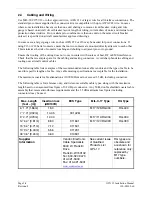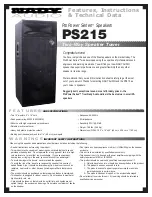
Page 3-4
GTX 32 Installation Manual
Revision F
190-00303-60
3.5
Electrical Load Analysis
An electrical load analysis should be completed on each aircraft prior to installation in accordance with
AC43.13-1B, Chapter 11. See Section 1.6.3 for Power Requirements. Use the following values for
Power Loads computation:
Table 3-3. Unit Power Loads
1
14 VDC
28 VDC
GTX 32 Input
2
Typical Max. Typical Max.
GTX 32 Main Power
1.1 A
1.85 A
0.6 A
0.9 A
3.5.1
Circuit Breaker Placard
Install a Circuit Breaker Placard labeled Transponder or Transponder
1, Transponder
2 as appropriate as
indicated in AC
43.13-2A, Paragraph 27c(4).
3.6
Final Installation
For final installation and assembly, refer to the outline and installation drawings shown in Appendix B of
this manual.
1.
Assemble the connector backshell as described in Section 3.3.
2.
Attach the connector to the rear plate using the screws provided in the connector kit.
3.
Mount the unit rack to the main system rack or other suitable mounting location using the provided
nutplates.
4.
Assemble the rear plate into the GTX 32 unit rack.
5.
Insert the GTX 32 into the rack, noting proper orientation as shown on the installation drawing in
Appendix B.
CAUTION
Do not use excessive force when inserting the GTX 32 into the rack. This may cause
damage to occur to the connectors, unit, and/or unit rack. If heavy resistance is felt
during installation, stop! Remove the GTX 32 and identify the source of resistance. The
rear plate is designed to float in the unit rack. Check to ensure the rear plate is not bound
by the connector harness.
6.
Lock the GTX 32 in place using the lever-locking handle. Fasten the handle to the GTX 32 body
using the provided Phillips screw. (Note that some early GTX 32’s use D-ring ¼-turn fastener)
CAUTION
Start the handle screw into the hole carefully, to avoid cross-threading. Do not apply
torque in excess of 14 in-lbs to the handle screw. The application of torque exceeding 14
in-lbs to this screw will damage the LRU case and/or retaining hardware.
















































